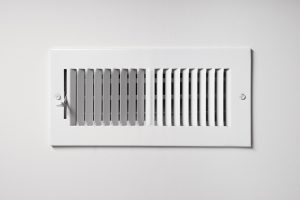 Any home can stay warm through the roughest winter thanks to the power of modern heating systems. But heating a home can also make it feel stuffy. This is often a complaint people have about gas furnaces, but it can happen with boilers and heat pumps as well. The obvious solution is to open up some windows—but that lets in blasts of cold air, leading to discomfort and making the heating system work extra hard trying to overcome it.
Any home can stay warm through the roughest winter thanks to the power of modern heating systems. But heating a home can also make it feel stuffy. This is often a complaint people have about gas furnaces, but it can happen with boilers and heat pumps as well. The obvious solution is to open up some windows—but that lets in blasts of cold air, leading to discomfort and making the heating system work extra hard trying to overcome it.
However, we propose another solution. One that allows you to vent out the stale and stuffy air in your house and replace it with fresh air from outside, but without having to open up the house to cold drafts and driving up your energy bills. And that solution is an ERV.
Who’s Irv?
No, not Irv. ERV. It stands for Energy Recovery Ventilator. It’s an appliance an indoor air quality professional can integrate into the ventilation system of a house to allow for the influx of fresh outdoor air while recovering energy to use to heat or cool the air so it’s close to the desired indoor temperature.
Okay, we have to unpack that a bit, because it sounds a touch confusing at first. Imagine a cold winter day, with temperatures in the 30s outside, but a home that’s cozy—although stuffy—around 70°F thanks to the furnace. The ERV draws in a current of outside air through an outdoor vent. This air is fresh, but also too cold for the house. At the same time, the ERV also draws in a current of the warm but stale air from inside the house. The two currents of air pass through a heat exchanger, were a process called cross-current heat exchange occurs. The hot indoor air loses heat to the cooler outdoor air, warming up the fresh outdoor air so it’s closer to the 70°F desired temperature indoors. The ERV then vents the stale air to the outside and vents the now warmed-up fresh air into the rest of the ventilation system.
By doing this, the ERV has “recovered” the energy used to heat the indoor air in the first place and applied it to the incoming fresh air. About 80% of the energy that would otherwise be lost gets returned to the home, along with fresh air to replace the stale air. The house enjoys less stuffy and stale indoor conditions without suffering extreme temperature drops or forcing the heater to do too much extra work.
An ERV Works in Summer as Well
An energy recovery ventilator can do its job in both directions. During hot weather, the fresh air from outside loses its heat to the colder indoor air, so it arrives in the ventilation system much cooler than before. Moisture transfers between the two currents as well, which means an ERV helps to balance indoor humidity levels,
To find out more about having an ERV (or a similar HRV, heat recovery ventilator) installed in your house, contact our IAQ experts. No matter what you need for HVAC in Woodbridge, NJ, you can look to us with confidence that the job will be done right. Your problem solved, or your money back!
For almost 90 years, Scaran has served Staten Island and its Neighbors.








